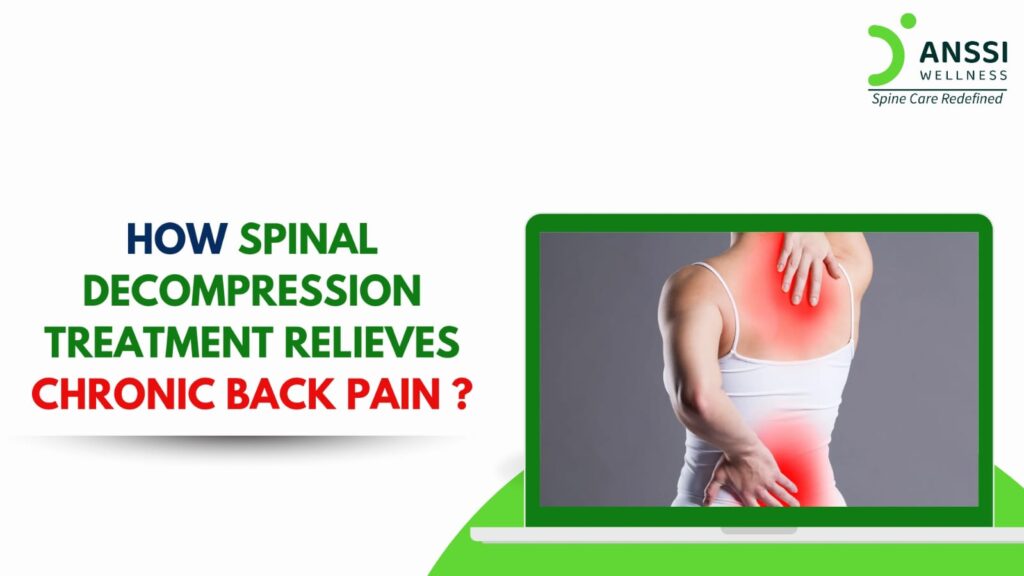Back pain affects millions globally, diminishing their quality of life. Among various treatments, spinal decompression has emerged as a popular, non-invasive solution. Let us explore how spinal decompression works, step by step, to relieve chronic back pain.
What is Spinal Decompression Treatment?
Spinal decompression is a non-surgical treatment that reduces pressure on spinal discs and nerves. It is performed with specialised equipment or manually by a skilled practitioner. This process creates negative pressure within the intervertebral discs, encouraging nutrient flow and relieving pressure on nerves, which helps to reduce pain.
Stage 1: Understanding the Spine
To understand spinal decompression, it’s essential to know the spine’s anatomy. The vertebral column contains vertebrae and intervertebral discs. These discs act as shock absorbers, cushioning the movement of vertebrae. When discs become damaged or herniated, they compress surrounding nerves, causing pain.
Step 2: Selecting Candidates for Treatment
Not everyone is suited for spinal decompression. Patients with conditions like osteoporosis, fractures, tumours, or infections may not benefit. A thorough evaluation by a healthcare professional determines if this treatment is appropriate.
Common conditions that respond well include:
- Herniated or bulging discs
- Sciatica
- Degenerative disc disease
- Spinal stenosis
Preparation for Treatment
Once a patient is deemed suitable, preparation begins. This typically involves:
- Consultation: Gathering detailed medical history and understanding the patient’s symptoms.
- Imaging Tests: X-rays or MRIs help assess the spine’s condition and pinpoint the source of pain.
- Goal Setting: Setting treatment goals with the practitioner to create a personalised plan.
Step 4: The Decompression Process
Spinal decompression is performed on a table designed to stretch the spine in a controlled manner. The steps include:
- Positioning: The patient lies on the table, secured by harnesses around the pelvis and upper body.
- Controlled Traction: The table gently stretches the spine, creating negative pressure within the discs, which helps retract the bulging or herniated discs, relieving nerve pressure.
- Duration: Each session lasts 30-45 minutes and is typically repeated several times a week.
Step 5: Post-Treatment Care
Many patients feel immediate relief after spinal decompression, though mild tenderness may occur. Post-treatment care includes:
- Rest: Allowing the body time to recover after each session.
- Physical Therapy: Exercises to strengthen back muscles and improve flexibility.
- Pain Management: Using ice or other methods to address any residual discomfort as recommended by the doctor.
Step 6: Monitoring Progress
Regular follow-up appointments are crucial to track the treatment’s effectiveness. Based on progress, adjustments may be made to the sessions. In most cases, patients experience reduced pain and improved mobility after multiple sessions.
Conclusion
Spinal decompression offers a promising, non-invasive solution for chronic back pain. Understanding the step-by-step process empowers patients to make informed decisions about their pain management options. Always consult a healthcare professional to determine the best course of action for your condition. If you or someone you know suffers from chronic back pain, spinal decompression may offer the relief you’ve been seeking.
About ANSSI:
ANSSI Wellness focuses on improving the quality of life for patients suffering from spinal issues, aiming to provide relief where other conventional treatments have failed. Through advanced non-surgical spinal decompression treatment, ANSSI is committed to helping patients avoid surgery and recover in a safe, effective, and compassionate environment.



